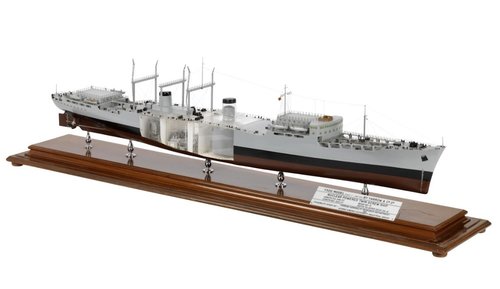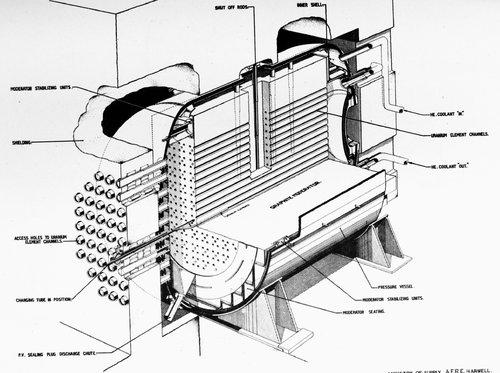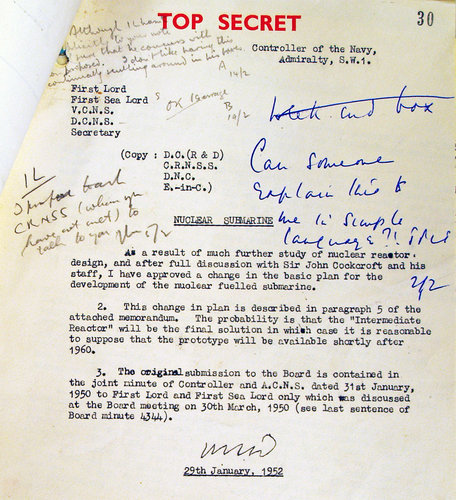pometablava said:What's a nuclear funnel?. What's the role of a funnel in a nuclear ship? ???
As long as we're responding to years-old posts...
There is a reason for a funnel in nuclear surface ships: blowout vents in case of coolant leaks.
pometablava said:What's a nuclear funnel?. What's the role of a funnel in a nuclear ship? ???
Don't forget air intakes for ventilation! If you place it in a funnel, you have room for the NBC Filters so that they don't impact below decks on precious volume.Madurai said:There is a reason for a funnel in nuclear surface ships: blowout vents in case of coolant leaks.
I think the French have always used LEU submarine fuel, the British always HEU. China, no idea.
The "French"? all of them? 67 million people, each using plutonium in submarines? woa! All propulsion reactors in France's Marine nationale's use are fuelled with oxyde LEU. MOX, if it is what is meant here, is not involved.
Wow, very impressive armament for a replenishment ship!!I know the Italians had (have) very particular styles in Naval Architecture. but could the attached of the poposed Enrico Fermi give any suggestions for a "Military" RFA??



Mind you, this is as nothing compared with the Scottish MP who asked a question in Parliament, referring to nuclear power for ships, as to whether:
‘Can the Minister say how long it will be before this power could be available for fishing trawlers?’
Wow, this Replenishment ships design appears to be better armed than most destroyers!I know the Italians had (have) very particular styles in Naval Architecture. but could the attached of the poposed Enrico Fermi give any suggestions for a "Military" RFA??
The ‘Enrico Fermi’ was indeed intended to be nuclear powered.Wow, this Replenishment ships design appears to be better armed than most destroyers!I know the Italians had (have) very particular styles in Naval Architecture. but could the attached of the poposed Enrico Fermi give any suggestions for a "Military" RFA??
Was it proposed to be nuclear powered?
Do we know what timeframe/year this design was proposed by Enrico Fermi?
Regards
Pioneer

On a side note:

Keith Foulger, naval constructor who worked on the UK’s nuclear submarine fleet – obituary
He ensured that there was no mismatch between US and British technology in the design of Britain’s first nuclear submarine, Dreadnoughtwww.telegraph.co.uk
RIP
Interestingly, not only was he involved in just about every major Royal Navy nuclear powered submarine project of the Cold War, he also seems to have worked on cruiser designs as well, especially during the 1969-1974 period, though some of those were certainly conventional designs.
Nope. PWR-2 was expressly designed to contain as little US IP as was realistically achievable at the time.So Royal Navy's Trident submarines have reactors of US design, right?
Mind you, this is as nothing compared with the Scottish MP who asked a question in Parliament, referring to nuclear power for ships, as to whether:
‘Can the Minister say how long it will be before this power could be available for fishing trawlers?’
Scotstoun briefly became involved in an Admiralty Research project with English Electric although when they withdrew in 1947 a new facility was established and became known as the Yarrow-Admiralty Research Department (Y-ARD). Two other organisations were also formed overseas: Y-ARD (Australia) and the Yarrow African Marine Consultancy which were both set up to meet the demand for land boilers.
The Admiralty continued to be a key customer for the yard over the next decade, ordering frigates and seaward defence boats and by 1954, the workforce was in excess of 2,500. Scotstoun continued its research into new technologies and in the late 1950s it was deep into the application of nuclear power for marine use. By 1961, Scotstoun marine engineers, shipbuilders and boiler makers at Scotstoun were carrying out extensive research into nuclear powered propulsion units.

 ukdefencejournal.org.uk
ukdefencejournal.org.uk


Not remove, there's a separate clearance system run by Department of Energy for nuclear stuff, in addition to any military classifications.That would be my understanding of it - the topology shown in the diagrams would be awkward to fit in a submarine (tall and thin), and Babcock & Wilcox didn't design reactors for the USN. Given that this was a civilian plant, using a different design would remove security classifications, also.
I doubt that it will end up happening, unless the new designs need a lot fewer people to operate.Just an RFI at this stage, so I think the 'soon' in the headline is a bit inaccurate.

UK may soon be operating nuclear powered warships
The Royal Navy is exploring the feasibility of nuclear power for large surface ships, including support vessels and surface combatants.ukdefencejournal.org.uk
The Royal Navy is specifically looking into the possibility of using Generation 4 nuclear technologies, including both larger nuclear reactors and micro modular reactors, for powering large surface ships.
[...]
A key feature is the development of smaller, modular designs like Small Modular Reactors (SMRs), which are more flexible and can be deployed in a wider range of settings, including for naval applications. These reactors also aim to reduce the environmental impact of nuclear power while maintaining high operational performance.
Crud, even the USN struggles to find enough Nukes.
Both true.I've read somewhere why the RN isn't too worried that the QE class carriers or other surface ships aren't nuclear powered:
Some nations/ports ban nuclear powered vessels, limiting options for deployment
Security required when docked is much higher
At least for the US, we can refuel ships off the CVNs, in addition to pushing JP8 to them for running any helicopters they carry.Still need to replenish food, aviation fuel, and ammunition regularly anyway, the carriers are very rarely going to sail alone and the other vessels in the task group still need to be refuelled.
Removing the requirement to manage both DoD and DoE restrictions would still be a big help, of course.Not remove, there's a separate clearance system run by Department of Energy for nuclear stuff, in addition to any military classifications.

Frankly, that's a bad training system. If the standard is set at the right level, and everybody passes, that's a success. If you keep having to raise the standard to make sure you fail someone, you're arbitrarily reducing the number of qualified people you have access to.Someone is required to fail every test, and at least one question per test is supposed to be so hard NO ONE gets it right.
TBH, the main reasons are money, politics, and crew. In more or less that order. The rest of it is largely spin.I've read somewhere why the RN isn't too worried that the QE class carriers or other surface ships aren't nuclear powered:
Ah, thanks for that!Removing the requirement to manage both DoD and DoE restrictions would still be a big help, of course.
As far as DoE clearances go, there were originally three:
Why those letters? Because the administrative form completed to grant them was the Personnel Security Questionnaire. The 'S' category has apparently now been retired, but an 'L' category exists (or existed) to provide 'Limited' access to Restricted Data.
- P, for people with no access to Restricted Data and no requirement to access it;
- S, for people who didn't need access to Restricted Data but who would frequently be in places where it might be found; and
- Q. for people who need access to Restricted Data

How many people have Q Clearance?
Ever wonder how many people currently have the enigmatic Q Clearance, the required security clearance for access to nuclear secrets? Well, I found out.blog.nuclearsecrecy.com
If you fail the first test, you get extra instruction on what you failed. I think it's failing the retests that get you kicked from program.Frankly, that's a bad training system. If the standard is set at the right level, and everybody passes, that's a success. If you keep having to raise the standard to make sure you fail someone, you're arbitrarily reducing the number of qualified people you have access to.
And equally, if the standard is set at the right level, and everybody fails, that's also a success. You've determined that nobody in that class was suitable for the role.
